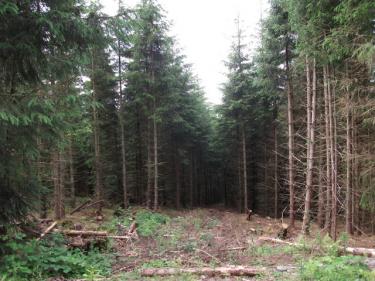Thinning
Why Thinning?
Thinning is one of the most powerful forest management tools available to landowners. It is simply the process of strategically removing trees, mimicking what periodic fires do naturally. Thinning influences tree growth rates, species composition, resistance to insects and disease, quality of wildlife habitat and visual appearance of a stand of trees. Another very important purpose for thinning can be added to this list: increasing the ability of a forest, particularly at lower elevations, to be resilient to wildfire.
What Are Ladder Fuels?
In many lower-elevation forests that have missed several cycles of periodic fire, smaller trees can easily catch on fire-- turning those trees into “ladder fuels” carrying the fire up into the crowns of the big trees. In this way, what used to be a low-intensity fire on the ground can quickly develop into an uncontrollable wildfire.
How Does Thinning Affect Fire Behavior?
Thinning increases the ability of some forests to better withstand wildfire by:
• Removing small trees and other ladder fuels, so the distance between the ground and lower live branches is increased. This makes it harder for a surface fire to move up into the tree canopy and become a crown fire.
• Leaving larger trees, whose thick bark and high branches protect them from ground fire.
• Increasing the distance between tree crowns to make tree-to-tree crown fire less likely.
How Is Thinning Done?
A wide variety of equipment is used in thinning. Crews equipped with chainsaws are highly versatile and can handle thick or sparse stands, flat or steep ground and all kinds of weather. Caterpillar tractors, skidders, farm tractors and even horses and all-terrain vehicles are used to move timber and small trees that have been cut down with a chainsaw.
Thinning will often leave large amounts of slash (left over branches and other tree waste) on the ground. If left in your woods, the slash itself creates a significant fire hazard. Thinning must be combined with a plan to remove these left over branches.
Need more guidance? For more advice about how to thin, consult a forester in your area or ask a question in our “Ask a Forester” forum. Also check our guide on how to thin your woods.
How can I get more tips?
It’s simple! Enter your email below.

